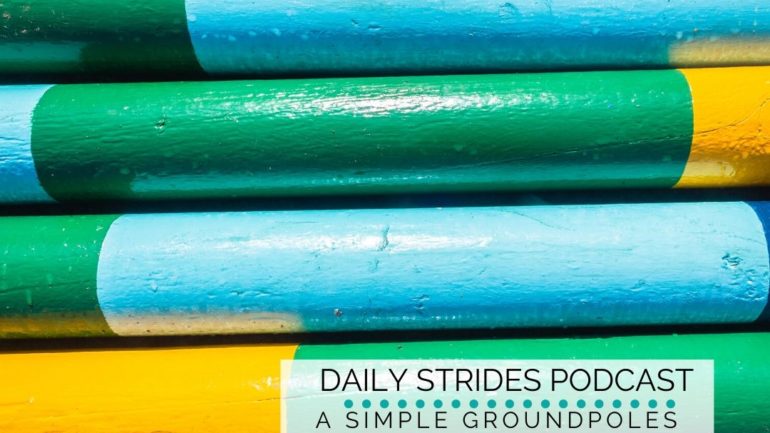
Do you have 5 or 6 poles that you can use in the arena? They don’t have to be the same length or width. In fact, the more variations you have, the better. If so, I am going to encourage you to ride this exercise a few times this week and begin noticing the differences.
It is one of the most simple and effective ways to develop your skills as a rider. And it will help develop your horse as well…
There are two ways to approach this. The first is to just place the poles randomly around the arena. No set layout. No set ‘track’. Just random poles, at random angles and intervals, sprinkled around your arena. Obviously, apply common sense and don’t place the poles too close to the track or at tight angles to the corners, etc.
If in doubt, think ‘sweeping’ bends and corners.
The second is to get out a pen and paper and scribble a bit! A few squiggles, circles, loops, and twists. Then just draw the poles on this wonderfully creative ‘track’ you have just created. Take your ‘plan’ and create it in the arena.
Whichever way you decide, what is key is that the poles are random. No straight lines, no related distances, no doglegs or anything at all, expect pure random.
Then, simply mount up and off you go..
Thinking About Your Track
The first reason I love this exercise is that it gets riders thinking. So many riders are literally riding by the seat of their pants in the arena! They are thinking ‘circle’ and then immediately launching into a circle. This ‘wheelbarrow’ riding does nothing to develop the horse, usually due to the horse being pulled around by the reins. It also actually erodes the horse’s trust in the rider over time.
Yes, having a horse who is responsive when you need him to be is worth its weight in gold. However, having a confused horse who never knows what to expect and is literally waiting to be hauled off-balance is not something to aim for in your riding!
I suggest creating a ‘track’ of 3 of the random poles initially. Then riding this track as accurately as you can.
Plan the route and see how close you can keep to it while continuing to move forward. This can be done in walk, trot, or canter. Obviously, I suggest starting in a walk and building from there.
Straightness and ‘The Line’
From here, you can begin developing your ability to see and ride a line. Many riders think that riding a line is something that only pertains to jumping or eventing. This couldn’t be further from the truth.
Riding a line is an essential basic all riders can work on developing.
It will help you in all areas of your riding, from groundwork to dressage. From trail riding to jumping. And everything in between. Using the random poles and, in this case, the 3 random poles track you have, work on identifying and then riding your lines.
A line over a pole is usually a straight line from Point A to Point B that intersects the center of the pole at a 90-degree angle. Your line and the pole will be at right angles to each other.
Work on squaring your horse’s shoulders and your shoulders to the pole. Then, once you are over it, work on keeping your horses hindquarters and your hips square to the pole as you move away from it. Clean, simple lines create straightness, which will develop both horse and rider over time.
Awareness of the Strides
The next huge benefit to this simple exercise is how much the rider becomes aware of their horse’s stride. When you have mindfulness around where you are going, and you are indeed riding a line, you can then begin to notice your horse’s strides.
If you follow the previous two steps, the length of each stride will become plainly obvious. From here, you can begin knowing how many strides it takes to cover a set distance.
This knowledge is essential to begin working on adjusting the strides. Playing with how and when you are going to ‘meet’ each pole. Staying on the track you have chosen or tweaked the track to better suit you and your horse and the current gait you are riding.
Developing Your Horse
Finally, you can then begin actively developing your horse. Start with the basics of relaxation and rhythm. Can you maintain both all the way around your simple 3 pole track? From here, begin asking different questions and noticing if you are still maintaining the basics?
Suppleness can also become a big focus of this exercise, especially the parts between the poles or lines.
Notice your bends and curves. Is your horse staying on track, or are his shoulders derailing or falling in? Maybe it is his hindquarters that are falling out. Noticing this and then working on perfecting the whole exercise, even just keeping the basics maintained throughout is a great exercise for horse and rider.
So this week, give this simple exercise a go and let me know how you get on in the comments below.
Keep well
Lorna
Additional Resources for Simple Groundpole Exercise:-
GROUNDPOLES FREEBIE
SUBSCRIBE TO GET THE PODCAST FREEBIE

